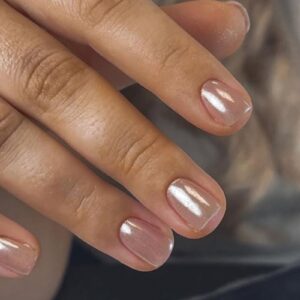
Image copyright & your nail photos
By Guest Writer | 07 March 2018 | Business, Feature

Tom Ferris, owner of Blackwell Ferris Marketing, offers insight into using images that aren’t yours across the ‘net…
After an interesting scroll through social media over the New Year period, I noticed a rising trend in thefts from companies across Europe. And that includes thefts by salons and nail techs.
Many times in the first weeks of 2018 I noticed a specific image celebrating the New Year: it was a black image with gold writing and fireworks with the wording, ‘Happy New Year 2018’. This image had been copied, reproduced and sometimes edited to help salons share New Year celebrations with their clients.
However, for many unsuspecting nail techs and salon owners, they were unknowingly breaking copyright rules. As I know that many didn’t realise what they’re doing is wrong, I wanted to outline some of the basics of sharing imagery on social media.
Firstly, there is a simple rule of thumb when using images for your social posts: if you copied it from a Google or other search engine, then you’ve more than likely broken copyright laws. But the worst part is that the image I noticed in the New Year was actually one that is sourced from a ‘stock image’ provider. This means that there are providers out there who own the right to use the image and they sell rights to designers to use in their artwork; whether that’s simply to share as it is, or run through a editing software such as Photoshop.
Even those who pay to use the image only buy rights to use it in a certain way, or to a set number of people, or used in print, on the web, or in another medium. This is why it is always advisable to use the images provided by a free image editing app such as Canva or Phonto, or pay a professional graphic designer to create posts for you.
Here’s a quick run down of tips to avoid any issues:
- Never copy and paste or screen shot from a search engine to use as your own posts or as part of a post.
- Putting your logo on a random image does not make it yours or give you rights to use it
- Use stock photo sites such as ‘Getty Images’ to source images that are licenced for use on your social media pages or your other marketing.
- Always check with the owner if you want to use their artwork, and attach your own edits or logo to it.
- Sharing a post using buttons like ‘retweet’ and ‘share’ showing where the image came from is good practice
- Ideally use a free app or a designer to take away the hassle.
- Keep a copy of any transactions or purchases so you can prove your entitlement if checked. Even global corporations check on customers. (I’ve been on the end of a phone call threatening legal action for over £20,000 for an image a ‘superfan’ used who said that the ‘brand’ told him he could use the image. Needless to say the brand could show evidence of purchase but the fan couldn’t.)
If you want to find out more about copyright laws in the UK then follow this link for an easy introduction to the topic: http://anglia.libguides.com/copyright

Read the latest issue









